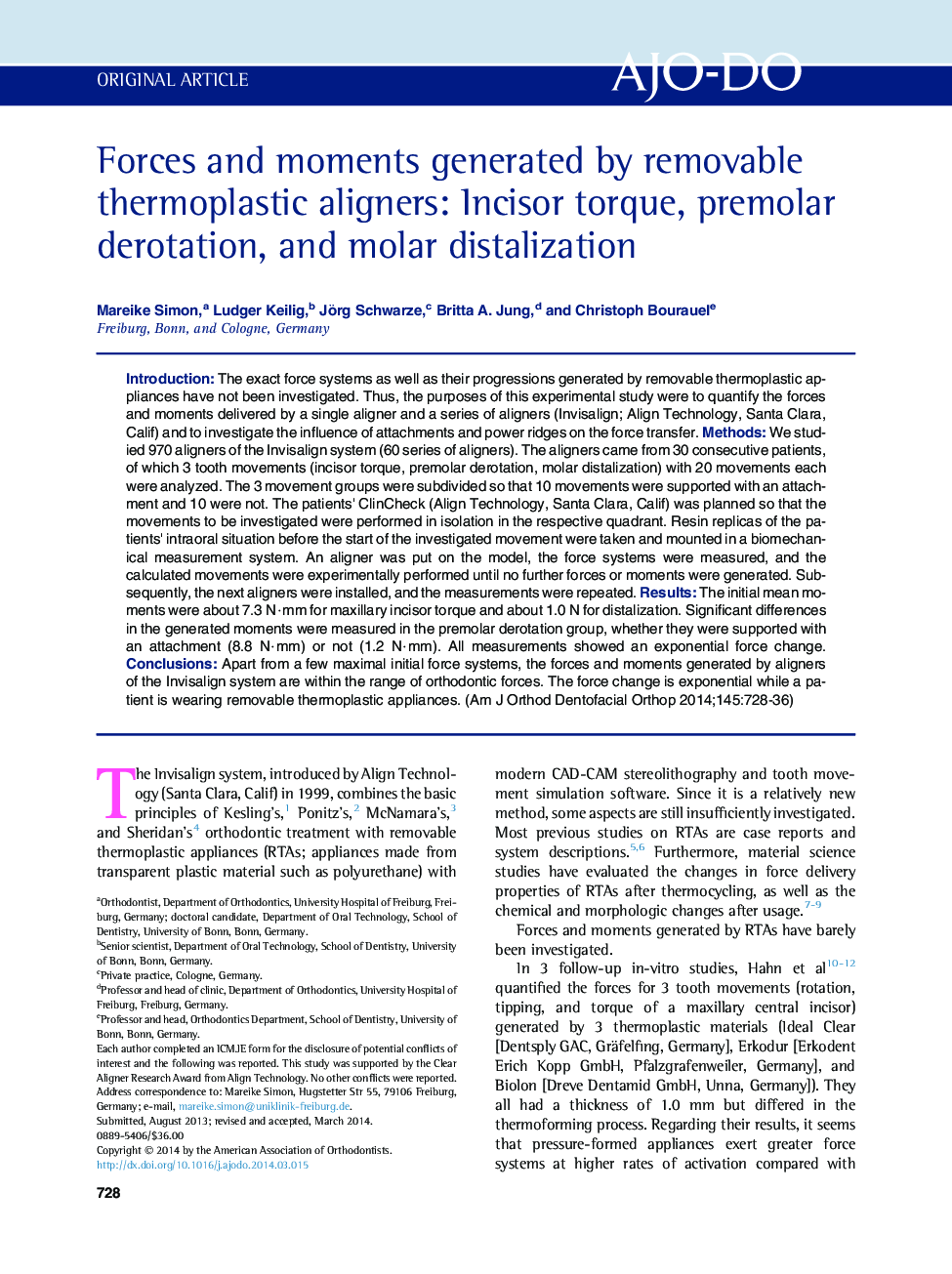| Article ID | Journal | Published Year | Pages | File Type |
|---|---|---|---|---|
| 3115683 | American Journal of Orthodontics and Dentofacial Orthopedics | 2014 | 9 Pages |
IntroductionThe exact force systems as well as their progressions generated by removable thermoplastic appliances have not been investigated. Thus, the purposes of this experimental study were to quantify the forces and moments delivered by a single aligner and a series of aligners (Invisalign; Align Technology, Santa Clara, Calif) and to investigate the influence of attachments and power ridges on the force transfer.MethodsWe studied 970 aligners of the Invisalign system (60 series of aligners). The aligners came from 30 consecutive patients, of which 3 tooth movements (incisor torque, premolar derotation, molar distalization) with 20 movements each were analyzed. The 3 movement groups were subdivided so that 10 movements were supported with an attachment and 10 were not. The patients' ClinCheck (Align Technology, Santa Clara, Calif) was planned so that the movements to be investigated were performed in isolation in the respective quadrant. Resin replicas of the patients' intraoral situation before the start of the investigated movement were taken and mounted in a biomechanical measurement system. An aligner was put on the model, the force systems were measured, and the calculated movements were experimentally performed until no further forces or moments were generated. Subsequently, the next aligners were installed, and the measurements were repeated.ResultsThe initial mean moments were about 7.3 N·mm for maxillary incisor torque and about 1.0 N for distalization. Significant differences in the generated moments were measured in the premolar derotation group, whether they were supported with an attachment (8.8 N·mm) or not (1.2 N·mm). All measurements showed an exponential force change.ConclusionsApart from a few maximal initial force systems, the forces and moments generated by aligners of the Invisalign system are within the range of orthodontic forces. The force change is exponential while a patient is wearing removable thermoplastic appliances.
